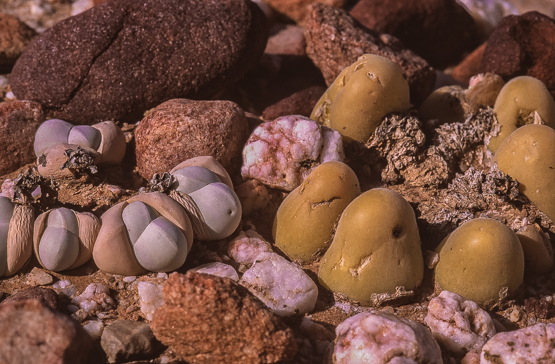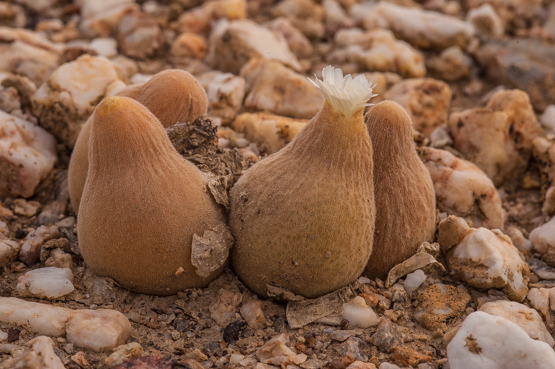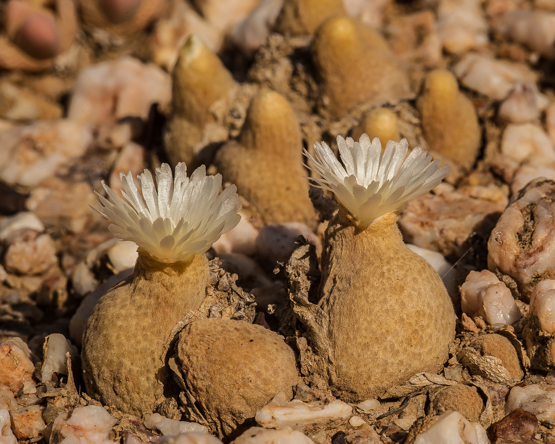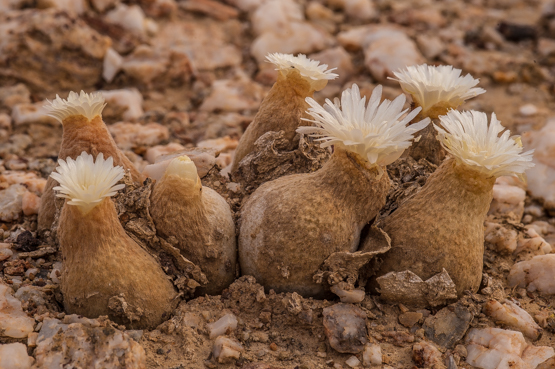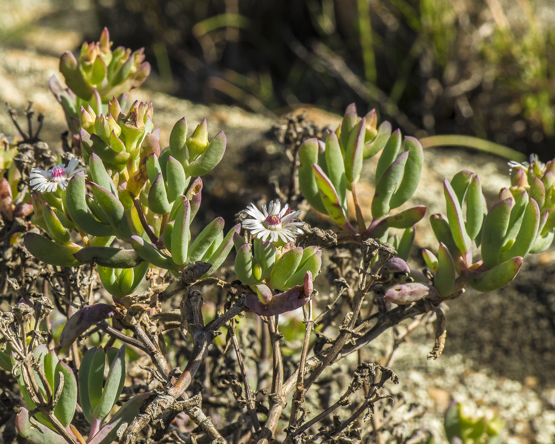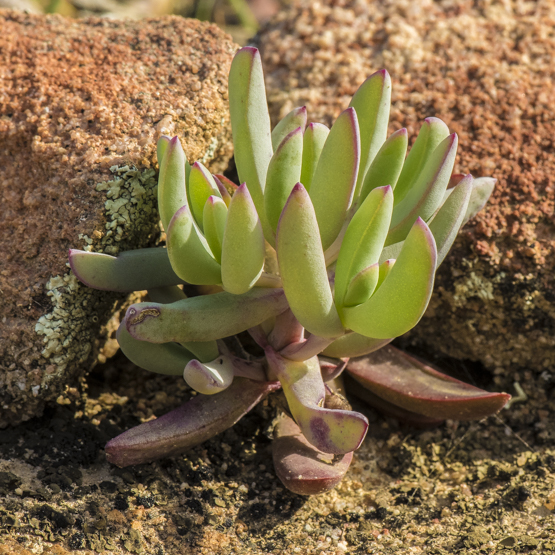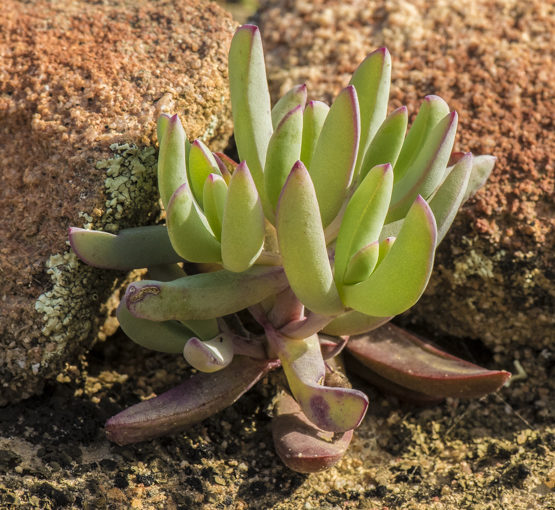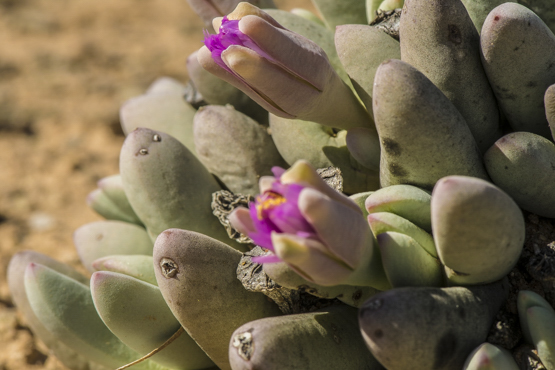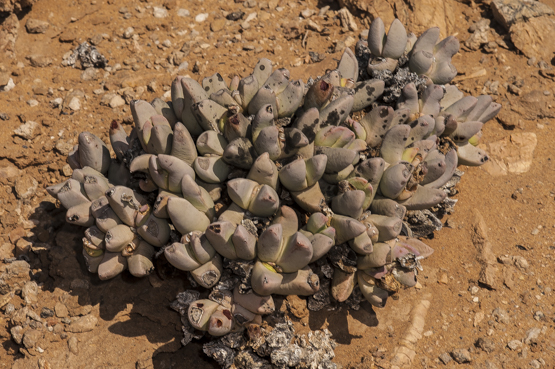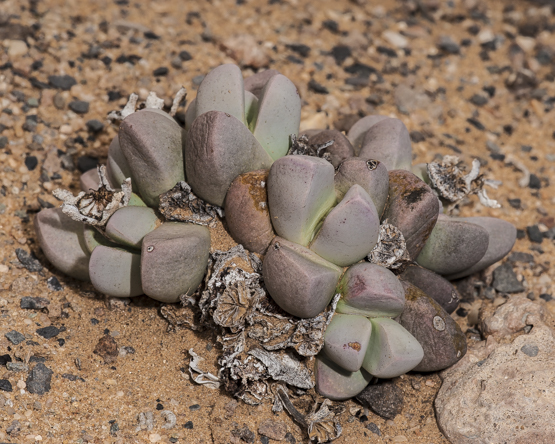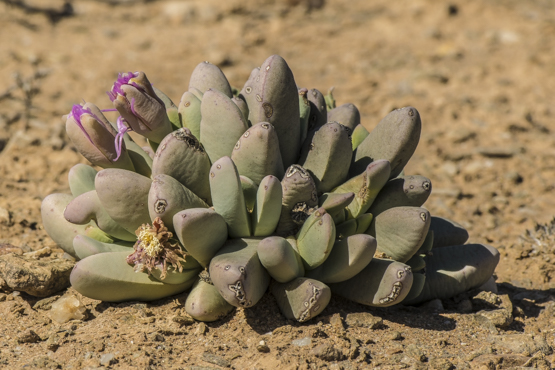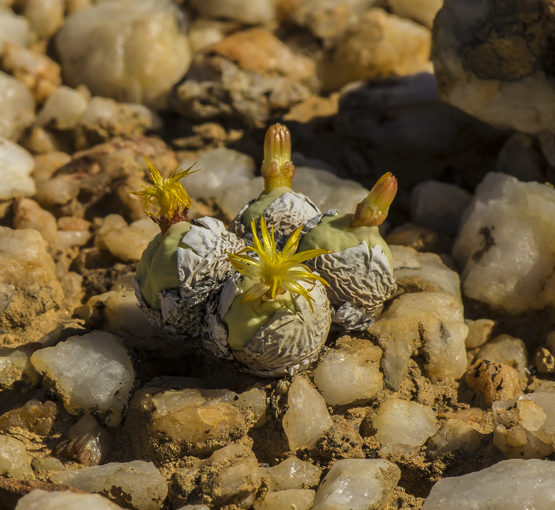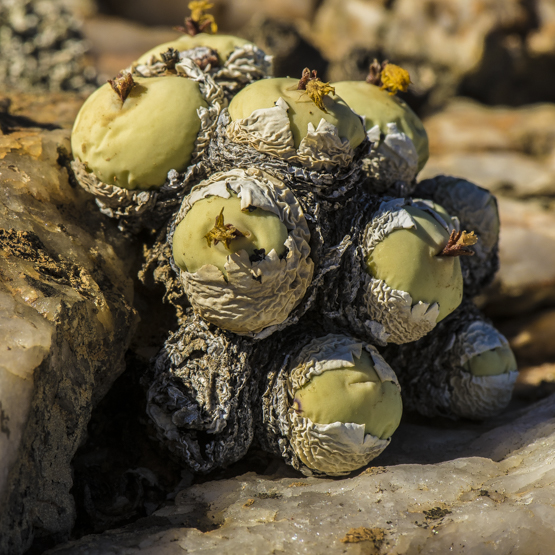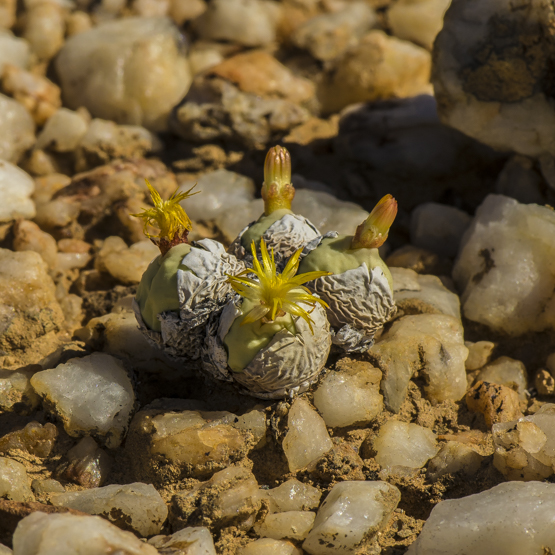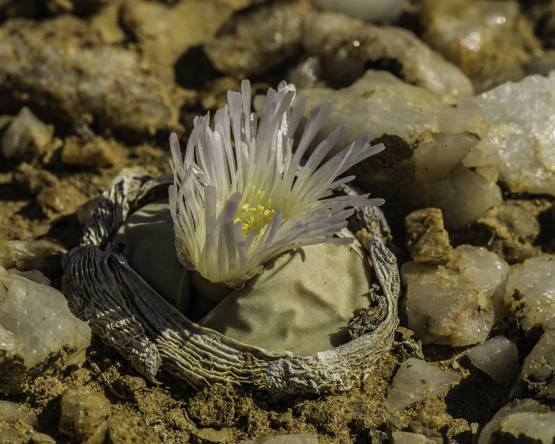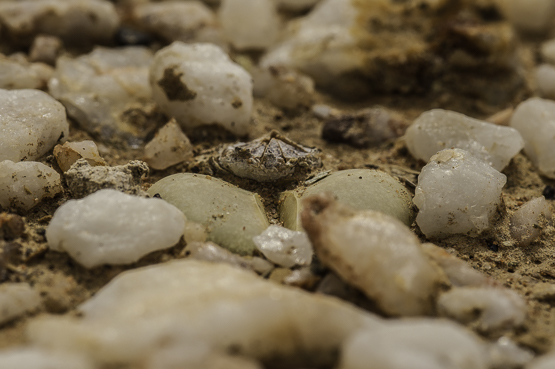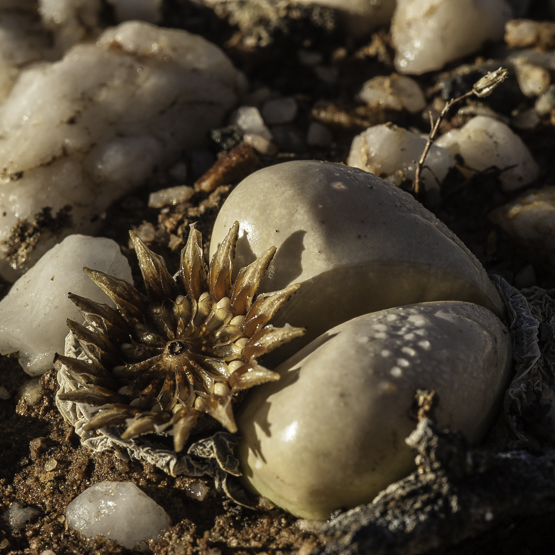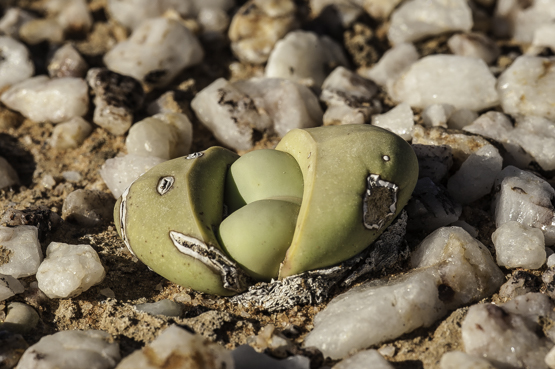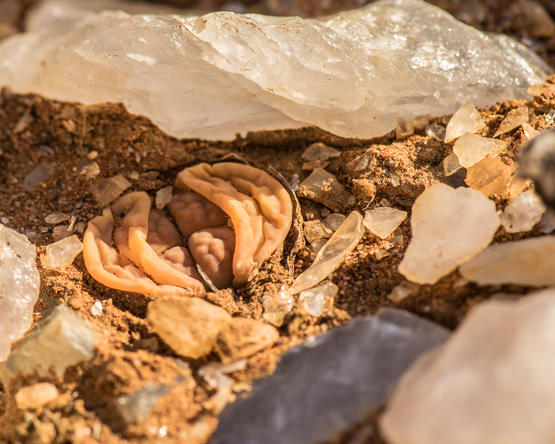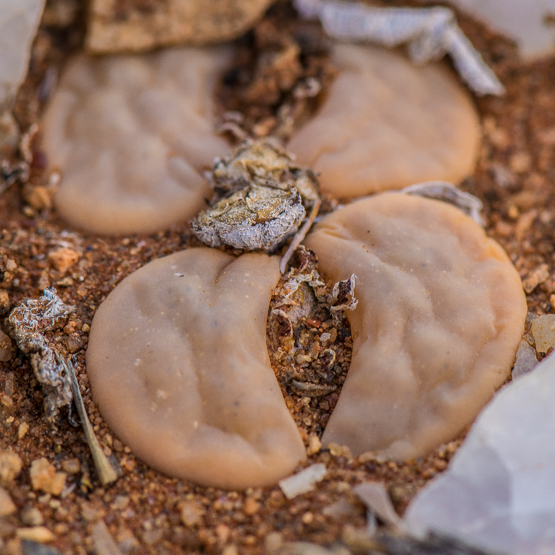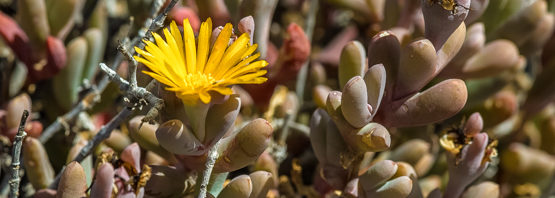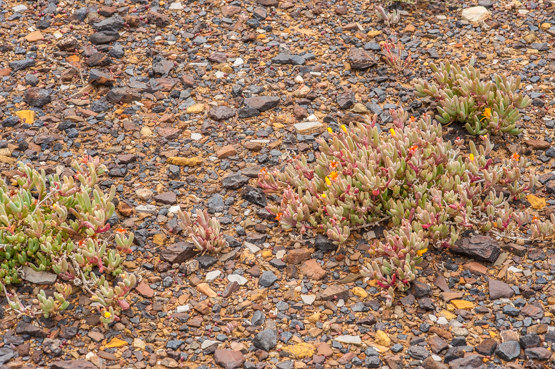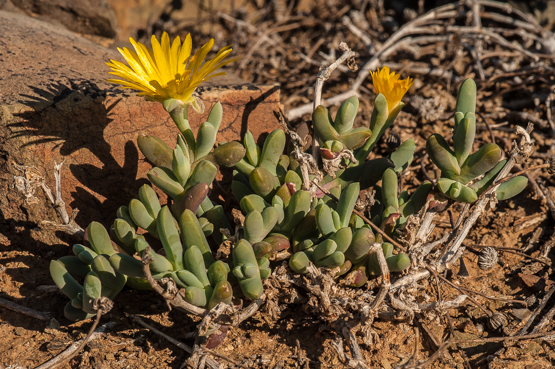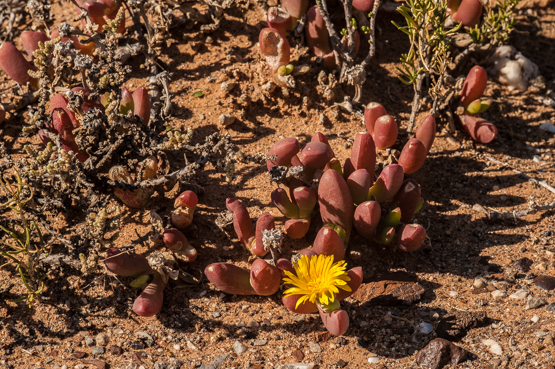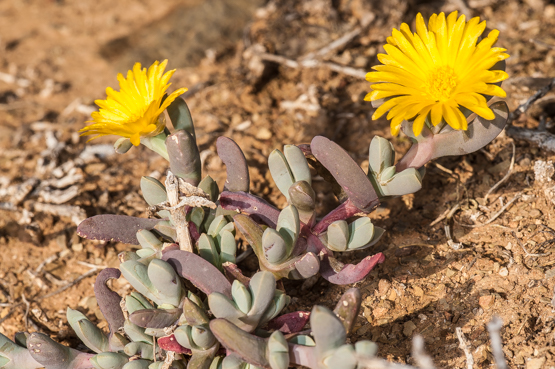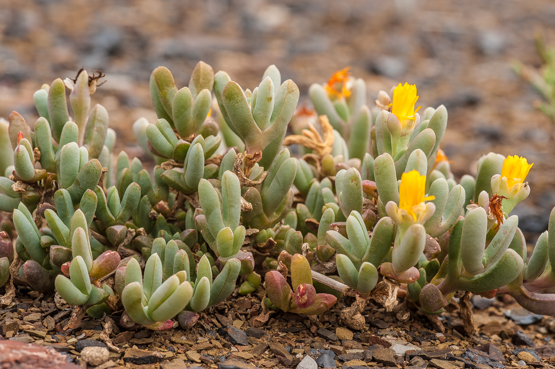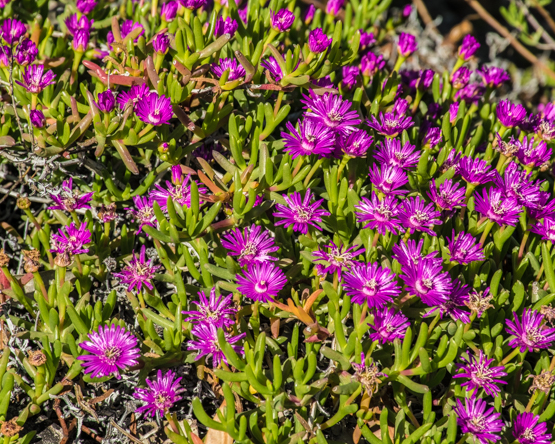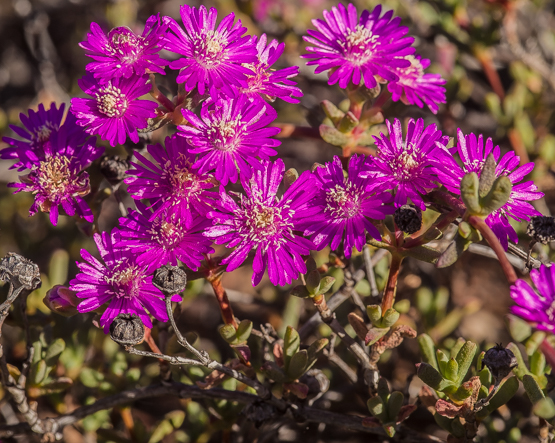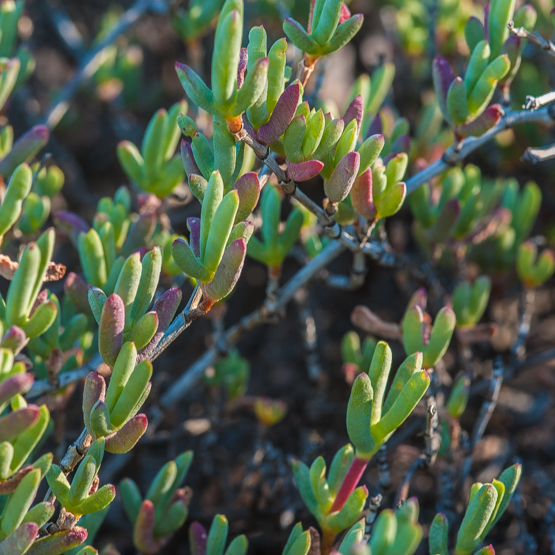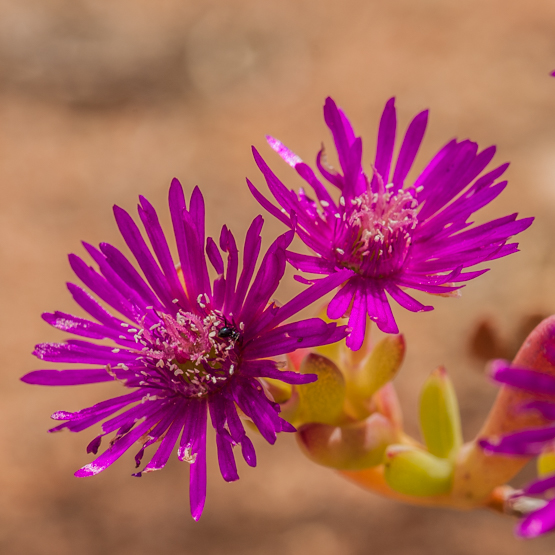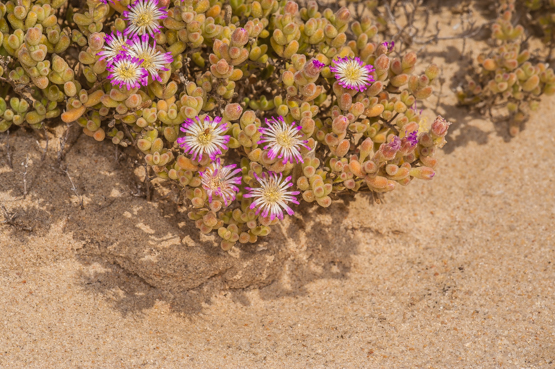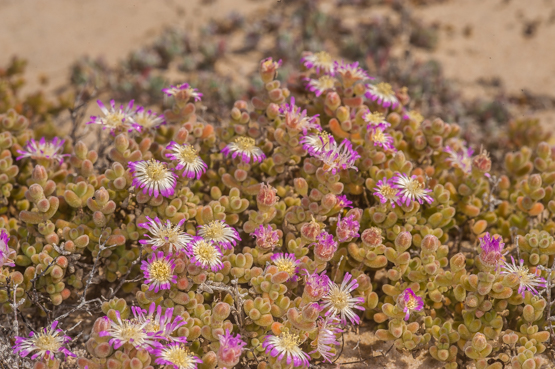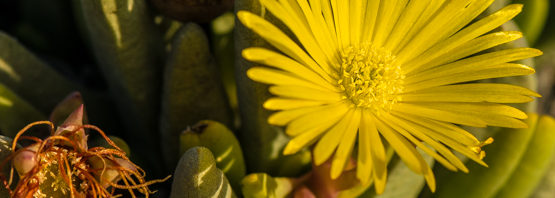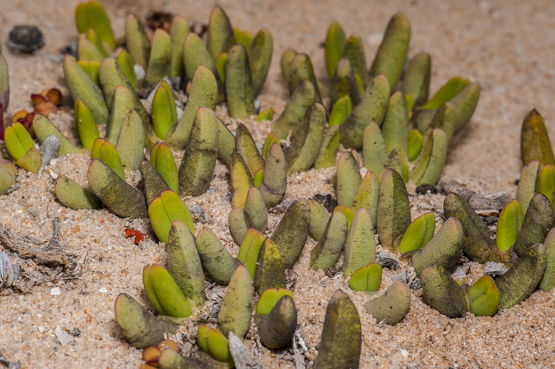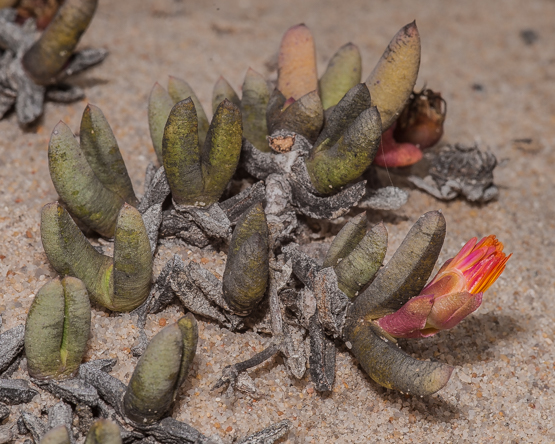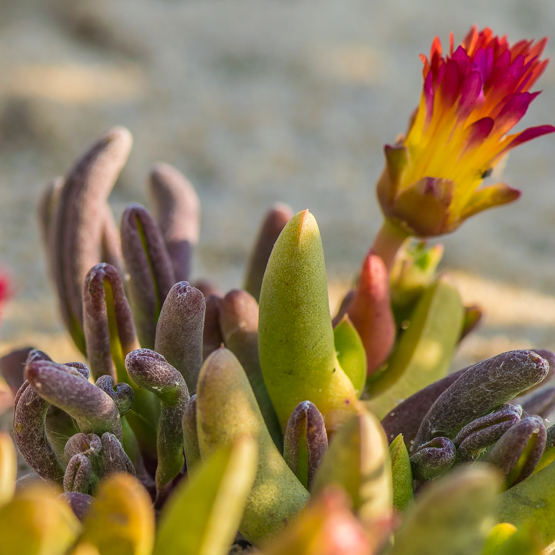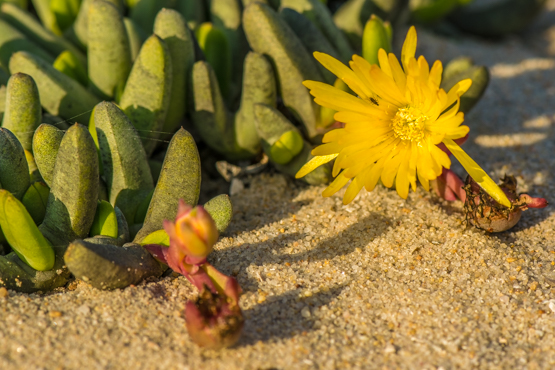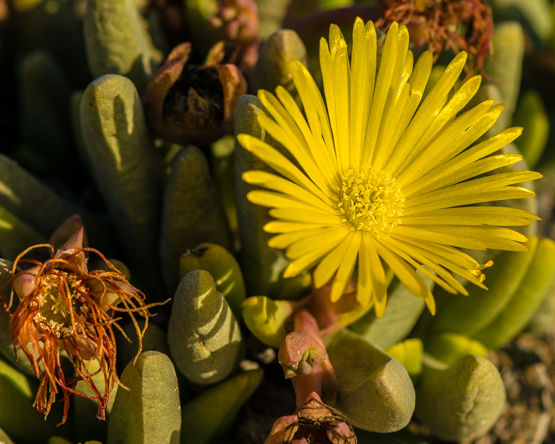These peculiar and very distinctive plants form little clumps of soft and velvety-hairy* leaf-bodies which are about 4 cm tall and 3 cm in diameter.
During the long resting period, the bodies are completely enclosed in the dry sheath-like remains of the previous pairs of leaves.
Because the leaves are completely united, the flowers have to rupture the tops of the bodies in order to emerge. They are about 2 cm in diameter, white to mauve and appear from November to Januari.
The plants are locally abundant on quartz outcrops, but are known from only one location (west of Barrydale in the western Little Karoo), in a highly saline area. They grow together with G. album -see first picture- and sometimes hybridise.
In his book Flowering stones and Midday flowers, Gustav Schwantes dedicates nearly 3 pages to this species and he is clearly highly impressed by it, as witnessed by the following remarks:
“The plant exhibits the highest expression of leaf succulence in the whole plant kingdom.
There is nothing of greater interest among the Mesembryanthemaceae than this living creature which is so unusual in shape and structure”.
*the hairs are among the longest in the family.
